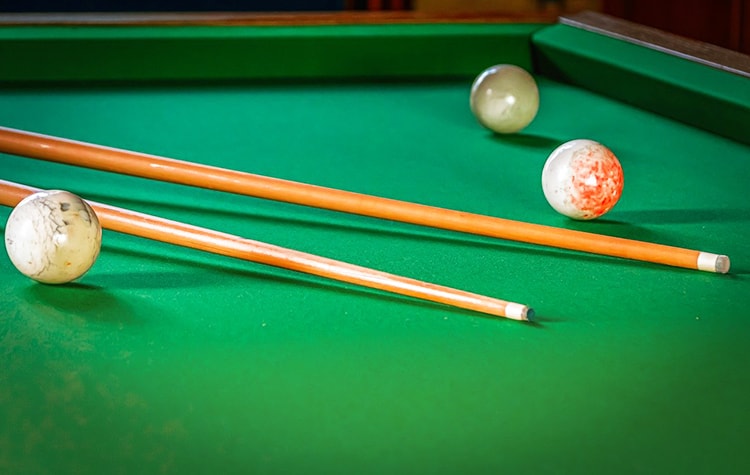If you’ve recently acquired some antique cue balls, you’re probably wondering if they’re the real deal. Ivory cue balls are a great talking piece, but they can also be a big moneymaker. Whether or not you’re looking to sell, it is good to know what you’ve got.
An ivory cue ball will not look like your typical cue ball made of acrylic. It may be discolored with dark lines or cracks snaking through it. When an ivory cue ball is pricked with a hot pin, it will not melt and will smell like burning hair. This will cause damage to the ball, so most people avoid performing this test.
If you have a really old cue ball, then you’re going to want to figure out what it is made out of because it will drastically alter the value and “cool factor” of the ball. Continue reading to learn exactly what to look for and how to perform the pin test.
How to Tell if a Cue Ball is Ivory?
The first cue balls were made out of wood, but as ivory became a popular material, people began making cue balls out of the material. These balls worked well at the time, but in the 1900s, cue ball makers began using synthetic materials that were easier to acquire and make into consistent well-balanced balls.
If you have a table that goes with that antique cue ball, check out our post How Much is a Used Pool Table Worth?
To figure out what your cue ball is made out of you, you have three options that we’ll go over below.
Carefully Inspect the Ball
So, if your cue ball is from the 1800s, it is probably made of ivory, which means it is bound to show signs of wear. Here’s what to look for:
- Dark-colored veins, typically a dark gray or black
- Off white coloring, usually yellow or brown
- Uneven coloring
- Engraved numbers, if present
- May no longer be a perfect sphere
Even if the most pristinely kept cue ball would have some signs of wear. If they are well kept, the veining may not be as prominent, but close inspection will reveal it.
If your cue ball is made of ivory and it doesn’t show signs of wear, it was likely made illegally. Trading in ivory is illegal in most countries because the quest for ivory has put elephants on the brink of extinction.
Ivory cue balls aren’t any better than acrylic. In fact, some argue that acrylic is better because of the consistency in manufacturing and more resistance to temperature fluctuations. So there’s no need to fund elephant extinction so that you can have an ivory cue ball. Stick to antique shopping.
Our post Are Pool Ball Different Weights? will tell you what to expect in terms of the weight of pool balls.
The Pin Test
There is a test if you really want to know what your cue ball is made out of, but it can leave a mark on the ball behind, and ruin the ball if it isn’t ivory. You have to decide if that risk is worth it to you.
- Place the ball in a vice carefully.
- Hold a pin in needlenose plier or something similar to prevent getting burned.
- Put the pin in the flame of candle or match to heat it up.
- Prick the ball with the pin. You don’t need to be overly aggressive about it. A firm prick should do it.
- If the ball melts or smells like burning plastic, it isn’t ivory. If the ball smells like burning hair, it is ivory.
Call in an Expert
If you aren’t sure and don’t want to deal with the pin test, take your ball to an antique dealer who specializes in antique billiards. They will be able to give the ball a thorough going over and may even people able to lend credibility if you have intentions of selling it.
With ivory cue balls bringing in $200 and more, it might be worth it to have the matter settled once and for all with a professional’s seal of approval.

